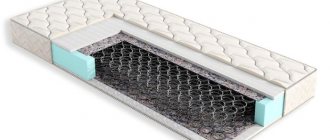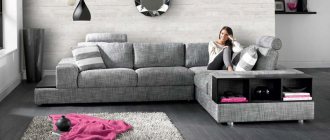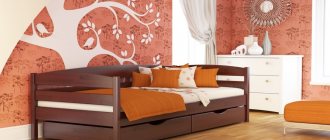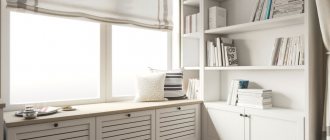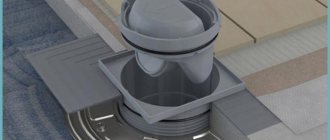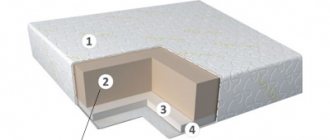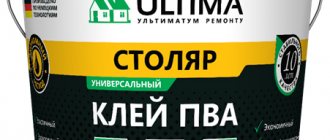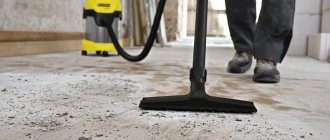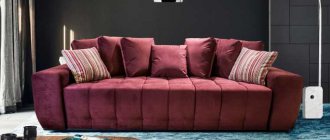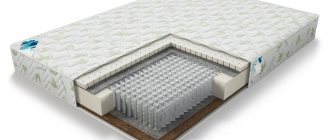The bathhouse was, is, and most likely will always be an integral part of the country lifestyle. Often there is no house on the site yet, but a bathhouse or a combined bathhouse with living rooms on top has already been built. And even though it seems that the bath topic has been studied inside and out, for beginners even the simplest question can become a puzzle. Let us make it easier for them to become familiar with this most pleasant and useful historical heritage.
What material is best to build a bathhouse from?
In the original version, these were just wooden log houses, even without a chimney, and they were heated black, that is, all the smoke remained inside the bathhouse, gradually covering all surfaces with a thick layer of soot. Of course, those days are long gone, but even now you can meet connoisseurs of smoke treatments. As for modern baths, there are practically no restrictions; the walls can be made of wood, brick, or any kind of blocks. Perhaps, bathhouses are not built only from monolithic reinforced concrete, but not because of any restrictions, rather, it is simply impractical.
Most often, the choice of building material for a bathhouse is tied to the technology by which the main house has already been built or will be built. Agree, a brick bathhouse will not look very organic against the background of a house made of cylinders or timber and vice versa. If the house, for example, is made of gas block or similar large format, which requires finishing of the facade, the bathhouse can be either block or, for example, frame or timber. A curtain wall with siding or panel cladding will help maintain the overall style. The main condition is the creation of a sealed circuit with minimal heat loss, and in what way, everyone decides for themselves. As for the shape, the flight of imagination is almost limitless; modern baths are square, rectangular, domed, and in the form of barrels. Another thing is how the original form will harmonize with the surrounding buildings, if it fits in - why not.
Types of blocks, their characteristics and features
Aerated concrete – refers to cellular concrete. It is made from cement, special foaming agents and quartz sand. This composition is poured into molds and water is added. As a result of the reaction, foaming occurs and the mass fills the mold. To give the material greater strength, the resulting blocks are treated with steam in special autoclaves.
Aerated concrete block. The color of the block is closer to gray, so the main filler is cement
For the construction of load-bearing walls and partitions, it is advisable to choose autoclaved aerated concrete, and for insulation you can use non-autoclaved one - it is cheaper, but its strength is lower. Aerated concrete blocks come in different densities:
- from 0.3 to 0.5 t/m3 is used for thermal insulation;
- from 0.5 t/m3 and above (up to 1.2 t/m3) can be used for the construction of walls.
For the construction of small buildings, you can use aerated concrete grade D500 (density 0.5 t/m3) - it can well be used for the construction of boxes and for the construction of partitions, and costs significantly less than brands with a higher density. When erecting bathhouse walls, to reduce the consumption of blocks, they are placed on edge, so the wall thickness is about 200 mm. This is quite enough, since the block retains heat well, especially since the walls will be insulated.
Bathhouse made of aerated concrete blocks. The block is placed on edge
The advantages of aerated concrete are its relatively low weight, ease of processing (it can be cut with a hacksaw or drilled with a conventional drill), does not burn, and gains greater strength over time. Disadvantages are relatively high hygroscopicity when using low-quality material and a fairly high price.
Gas silicate differs from aerated concrete in the main binding material: for gas silicate it is lime (62% quartz sand and 24% lime), for aerated concrete it is cement (up to 60%). Moreover, gas silicate is produced exclusively in autoclaves. These materials differ in color and hygroscopicity: aerated silicate is always white and actively absorbs moisture, as a result of which it can be destroyed, while aerated concrete simply allows moisture to pass through, maintaining comfortable humidity in the room, and if you choose from these two materials, then it is better to use gas concrete.
The gas silicate block is white, so the main material is lime
You can find detailed information about construction using gas silicate blocks in the video.
Foam concrete is one of the types of cellular concrete. It is made from a mixture of sand, cement and water, into which foam is mixed from a special foam generator. The manufacturing process is simple, allowing it to be produced privately. This is where the danger lies: there is a high probability of purchasing low-quality material, which will quickly begin to deteriorate.
Bathhouse made of foam concrete blocks
The advantages of foam concrete include its lower cost (compared to aerated concrete) and better water resistance. Comparison of gas silicate and foam concrete blocks, see the video.
Cinder blocks are made from slag filled with concrete solution - waste obtained after the combustion of coal or other materials. This type of material is the cheapest, but there is one peculiarity: the slag must sit for at least a year, otherwise it releases harmful substances.
Cinder blocks are the cheapest type of building material
Sawdust can be used as a filler in the manufacture of building blocks. In this case, the material is called “sawdust concrete”. This material is easy to cut and drill, and has 2 times the thermal conductivity of brick. In addition, it is environmentally friendly and non-flammable (sawdust is insulated with a layer of concrete), and is lightweight.
Sawdust concrete is absolutely safe and environmentally friendly
Expanded clay concrete is a material that in most cases has replaced cinder block. In this case, the filler is expanded clay - foamed and fired clay. This material is absolutely non-toxic, almost does not absorb moisture, and has excellent heat-insulating properties. Expanded clay concrete blocks are relatively light in weight, which facilitates construction work.
Construction of a bathhouse made of expanded clay concrete
The thermal insulation properties of expanded clay concrete depend on the filler fraction - the larger the fraction, the better the thermal insulation, but the lower the density. When building a bathhouse from expanded clay concrete, it is better to carry out insulation from the inside of the room (a layer of basalt wool is recommended, on top of which foil paper is laid with an air gap of 2.5 cm to the finishing materials). The table shows some block parameters that will help you decide which one is preferable for you.
We suggest you read: Why do you need a bottle in the sewer?
| Aerated concrete | Sawdust concrete | Foam concrete | Expanded clay concrete | cinder block | |
| Strength kg/cm2 | 5-20 | 20-50 | 10-50 | 50-150 | 25-75 |
| Thermal conductivity | 0,15-0,3 | 0,2-0,3 | 0,2-0,4 | 0,15-0,45 | 0,3-0,5 |
| Volumetric weight kg/m3 | 200-600 | 500-900 | 450-900 | 700-1500 | 500-1000 |
| Frost resistance (number of cycles) | 10 | 25 | 25 | 50 | 20 |
| Wall cooling time | 50 | 65 | 60 | 75-90 | 65 |
| Shrinkage (mm/m) | 1,5 | 0,5-1,5 | 0,6-1,2 | ||
| Water absorption | 100 | 60-80 | 95 | 50 | 75 |
Any construction begins with choosing the type of foundation. If you decide to build a bathhouse from blocks, you should choose a strip or pile foundation - most blocks are light in weight, and bathhouses are usually a one-story structure and there is no need to spend extra time, money and effort on making a more complex foundation.
The laying of blocks is carried out by analogy with brickwork, with the only difference being that it is advisable to lay a metal mesh every 2-3 rows. It will add additional rigidity and strength to the entire structure. To make the work easier, it is very important to lay out the first row of blocks evenly. They need to level and compensate for all existing unevenness in the foundation. At the very top you can strengthen a crown of timber, to which it will be convenient to attach the rafter system and the base of the roof.
For insulation, it is advisable to use a layer of basalt wool, on top of which a foil film or vapor barrier membrane is laid. It is advisable to provide a gap between the foil (membrane) and the finishing materials by filling the slats with a thickness of 2.5 cm and then attaching the lining to them.
Insulation and moisture protection of a bath using foil films
Most units require exterior wall finishing. Here everyone chooses to their own taste: you can plaster and paint, cover it with finishing stone or brick, etc. You can decorate the walls with siding, but for better ventilation there should be a distance from the wall to the siding (for foam concrete at least 5 cm).
How is a bathhouse different from a sauna?
In fact, structurally there is no difference, sauna is the original sound of the word “bath” in Finnish. With the difference that in a Russian steam bath there is average heating and high humidity, while in a sauna there are high temperatures and minimal humidity. For comparison:
- temperature in the bath – from +50 to +60-65 ⁰С;
- temperature in the sauna - from 80 to 100 ⁰С (we do not take into account sports competitions, where they reach 120 ⁰С);
- humidity in the bath – from 60 to 65%;
- humidity in the sauna is up to 20%.
Due to the high temperature in the sauna, it is not customary to steam with a broom, since it is quite possible to get not pleasure and benefits, but a burn. It is very convenient that modern sauna stoves are universal and operate in both steam and dry-air modes. But this parameter must be taken into account at the stage of choosing equipment; not all heaters can be supplied with water. Dry-air saunas are often made right in the house, as they require less space and are easier to install due to minimal humidity.
Foam block
The material is a type of sand-lime brick. Only in its composition quartz sand is replaced with porous slag, which, in turn, is heavy and low in price.
We suggest you read: How to plaster a stove in a house with your own hands
The construction of a building intended for a bathhouse from this material is a quick and easy labor-intensive method. Moreover, it is the cheapest, which for many site owners is a fundamental condition when choosing the best blocks for a bathhouse.
Since cinder block is made from a variety of admixtures, obtaining a good and durable result will be achievable only if you choose a high-quality material. There are very often bad raw materials on the market. Impurities can vary in composition and properties. In order for construction to be sustainable and environmentally safe, cinder blocks should only be purchased from trusted manufacturers and in good stores (even if it costs more than on the market).
In addition to the low price, this material has other advantageous properties that indicate that these blocks are perfect for building a bathhouse:
- The most important thing is that cinder block retains heat excellently due to its high degree of porosity;
- It is low in weight and therefore easy to install;
- Has a fairly wide range of sizes;
- Fungal and mold formations do not grow on its surface;
- It is a fire-resistant building material;
- Possibility of quick construction of a building (in a few days).
When wondering about finding the best building blocks for a bathhouse, don’t forget about the foam block. It is a building material made on the basis of sand cement mortar and a foaming additional component, which, in turn, comes in initially foamed form or in the form of substances that foam when mixed. Such a block can be considered as a material for constructing a steam room in a bathhouse with your own hands.
Disadvantages include:
- Uneven distribution of foam, resulting in an uneven block structure. This causes moisture to collect inside the material. To avoid this problem when building walls made of foam blocks, it is worth hydro- and vapor barrier. To do this, they should be treated on the outside with any hydrophobic impregnation, and a foil layer of waterproofing should be stretched on the inside.
- The material is less durable, so it is not able to withstand a lot of weight. It is recommended to construct buildings from it no higher than 2 floors.
The substance from which they are composed is obtained as a result of a chemical reaction between Portland cement and aluminum powder, together with quartz sand and lime, diluted with water. Gas silicate blocks are one of the best blocks for the construction of baths. They have a number of advantages, which include:
- Price. The material for construction has an adequate and reasonable price. Since it is produced using a very simple technology that does not imply any special steps. This ensures low cost.
- Low level of thermal conductivity, which will help retain thermal energy in the bath for a longer time.
- Light weight material. The work can be done by one person and does not require laying a heavy foundation.
- Fast construction process due to the large size of the blocks.
- Easy cutting of material with improvised tools, which is also important when constructing a bathhouse yourself.
- Fire resistance. Gas silicate blocks do not burn at all, which reduces the likelihood of fire.
Well, of course, like all other blocks suitable for building a bathhouse, gas silicate ones also have their drawbacks:
- They are highly saturated with moisture, so they require an additional layer of waterproofing.
- Also, the erected foundation must be at least 50 cm from the surface of the earth.
A well-known and familiar building material.
Advantages:
- Durability. The service life of brick buildings is up to 150 years;
- Beautiful appearance, creating the effect of solidity and solid construction of the building;
- When choosing a facing material, you don’t have to additionally decorate the surface of the walls;
- Has good thermal insulation qualities;
- The ability to give the bath a variety of shapes and sizes.
Unfortunately, even this material has its drawbacks:
- Large heat capacity, which will make the heating time longer;
- High degree of steam conductivity. In a brick bathhouse, it is imperative to install a ventilation system and lay a vapor barrier layer. Otherwise, the walls will become damp.
- The material is very expensive, so not everyone can afford it.
We suggest you familiarize yourself with: Which insulation for a bath should you choose?
And so, to summarize, it’s still up to you to decide what is best to build a bathhouse from. There are currently several types of building blocks on the market that are well suited for building bathhouses. All of them have a number of advantages and disadvantages, which must be carefully weighed and, based on the findings, possibilities and desired results, choose the most suitable material.
Related Posts
- How to protect walls from a stove in a bathhouse
- Which timber is better to build a bathhouse from?
- Sauna stove: installation, lining and painting
- Do-it-yourself finishing of the ceiling, walls, and floor of a steam room in a bathhouse
- What materials are best to build a bathhouse from?
- Making bath doors with your own hands
The undoubted advantage of this material is its high strength, frost resistance and fire safety. Just like wood (although to a lesser extent), brick contributes to the natural regulation of moisture in the room.
Which blocks are best to build a bathhouse from? Let's try to understand this issue in detail. Is it worth using blocks to build a bathhouse at all?
What bath size is considered optimal?
In each individual case, the dimensions are selected based on personal preferences and capabilities; to whom give a mansion with a swimming pool, and to whom a small steam room with a tiny sink and dressing room - for the eyes. Nevertheless, no one has canceled the concept of expediency; when determining the size, a number of parameters are taken into account.
- The estimated number of steamers at the same time - regularly visiting the bathhouse, and not taking into account a possible crowd of friends once a year.
- Layout - it is influenced by the desired set of steaming modes and accompanying procedures - in the bathhouse you can not only steam, but also engage in health procedures.
- The intended operating mode is only in the warm season or all year round.
To make the bathhouse comfortable:
- for each steamer, 1-2 m² of steam room space is provided (the maximum will be needed if the household members are of heroic blood);
- if a large-sized heater is planned, in the steam room a safety zone is added to the calculated quadrature: on each side of the brick stove there should be half a meter of free space, for metal stoves a meter is left;
- the height of the finished ceiling varies between 2-2.5 m, on average it is 2.1 m; if it is made less, it will be inconvenient to steam with a broom;
- a basic set of premises: steam room, washing room, dressing room; if you add a terrace, it won’t be any worse, and if you have the opportunity to add a rest room, great. There must be at least 1.5 meters in the washing room for each bather; the permissible minimum if there is a shower is 1.8 x 1.8 m.
According to the experience of FORUMHOUSE participants, a bathhouse with an area of about 14 m² is sufficient for seasonal use, and about 20 m² for year-round use.
Which is better
I would still like to start by looking at wood. And not immediately by species, but for now only from the popular opinion that the best wood will be that which was harvested in winter.
It is expected that such wood will be drier than wood harvested at other times of the year. But we did a little investigation. In fact, according to wood harvesting reference books, the same conifers contain more moisture in winter than in summer. And it seems to us that the source of this myth was... the birch tree.
All sorts of light walkers and survivalists highly recommend birch as a tree for a winter fire. Because it is much drier than other breeds at this time. And by the way, they really don’t recommend conifers . Their experience also says that this wood is too wet, which means it will burn extremely poorly.
Log houses are also made of birch, of course, but only as part of a bathhouse (steam room). But for the rest, they still prefer spruce and pine (and other conifers) - and not only because they are the most abundant in Russian forests. Therefore, we advise you to be more critical of the myth of “wood harvested in winter.” You should be more interested in humidity and drying conditions .
But it’s better to install a log house in winter . And the reason for this is a fungal disease called “blue” or “blue”. Certain types of fungi change the color of the sapwood to bluish. But the matter is not limited to color - some characteristics of the tree also change, it begins to absorb more moisture, for example. However, strength does not suffer .
So, in winter, mushrooms are much less active , and if they are not encouraged, they will not grow. A log house installed in winter will avoid this disease.
Of course, treatment with an antiseptic and bleach will cause the blue discoloration to disappear. But we are talking about a bath, and the antiseptic is poisonous, so you should not use it in the steam room. Bleach... often it’s just bleach, and it erodes, so you can bleach wood in a steam room, but use it only after the smell disappears (more about bleaching here).
IMPORTANT! Antiseptics must be distinguished for internal and external work, and not be confused with each other. It is worth treating the log after laying it, and with the part that will be inaccessible in the future, do the same - impregnate not the wood with an antiseptic, but a jute lining (for example).
What species are suitable for logs?
As already mentioned, for the most part these will be coniferous species. These are the ones you most often find on the market and in the offers of construction companies.
Of course, there is a lot of taiga in Russia, but the main reason will still be strength and resistance to rotting thanks to resins . And, of course, the straightness of the trunks is higher for conifers than for deciduous ones. All this applies not only to the cheap pine and spruce mentioned above, but also to more expensive species - larch and cedar. They may also offer you fir.
Among the deciduous trees we would name oak, birch, aspen, alder and linden. But only oak has sufficient strength and resistance to external influences. And it's very expensive.
Since we are talking about a bathhouse, where high temperature softens the coniferous resin and causes it to flow to the surface, there are two options: either partially use hardwood to build a steam room, or line the steam room made of coniferous wood with hardwood paneling .
Spruce has less resin and is lighter in color than pine. Larch and cedar are noble species. Larch is not afraid of water, it only makes it stronger.
BY THE WAY! You shouldn’t delude yourself about cedar - this is not at all the tree from which King Solomon built. Here you will find not Lebanese cedar, but Russian... cedar pine. This is what we call “cedar”.
Whom to choose? Focus on your budget. If it allows, take larch; if not, then pine will do. Although... I would like to advise you not to trust myths too much - under unfavorable conditions, larch may well rot, and under favorable conditions, linden can stand for decades.
And it is worth warning that the rounded log into which cone-shaped trunks turn can, over time, present many unpleasant surprises. Especially from the same larch. If you take an atmospheric drying log, then it often begins to wear out over time. It can curl, bend, or simply go into deep cracks.
This can only be avoided if you take trunks that have been subjected to heat treatment. It comes in two types - regular and chamber. In the first case, uniform shrinkage is achieved, but with preservation of the resin.
The second lasts much longer, and the output is wood with evaporated resin, which does not cause shrinkage, torsional deformation, bending, or cracking . All this is extremely valuable, but the price of such wood is high.
Dimensions, diameter
Before we name the dimensions of a log for a bathhouse, let's briefly go over what we know about trunks. Firstly, they tend to get thinner closer to the crown. Consequently, the upper diameter will be less than the lower diameter of the cut.
And for even laying , a cylindrical rather than a cone-shaped shape is preferable. Therefore, of the three types of processing of trunks - rounding, planing and scraping, we get the maximum evenness only in the first case, the minimum - in the third, and the second - something in between.
At the same time, rounding is the cheapest , since it is done on machines, while the rest involves manual labor. Manual labor costs more than machine labor. But is a rounded log ideal for use?
There is nothing wrong with the operation itself, and it produces a form that is ideal for construction.
IMPORTANT that the wood itself has no defects and is properly dried. In this case everything will be fine.
The planed version has one caveat: after all, when laying logs in a wall, you should adhere to the GOST rule, according to which 1 cm of camber is allowed for each linear meter. (Let us explain: camber is the change in diameter.)
With the scraped version there is no need to expect compliance with GOST standards for consistency. And all the flaws remain there - changes in thickness are possible in places where branches grow, and the curvature of the trunk is not eliminated.
It is clear that the first and second options are preferable, but not the third.
Now about the uniformity of the logs. There is also a rule about it:
ATTENTION! The permissible difference in the diameters of the crowns used in construction should not exceed 30 mm.
That is, it doesn’t matter whether your diameters are large or small, the main thing is that they are not very different from each other. Otherwise, the strength of the structure will be in question.
As for the dimensions, the linear dimensions depend on the project and on the climatic conditions of the area where the bathhouse will be located. You should also take into account the seasonality of its use - thinner logs are suitable for a summer bathhouse than for an all-season one.
If the task is to make a very light summer building , you need to take material with a diameter of up to 18 cm . And it is also useful in all-season baths for creating partitions.
A more substantial summer(!) sauna can be made from logs with a diameter of 18-22 cm .
For all-season baths, diameters from 22 to 28 cm . Large numbers are applicable where we are talking about large-area objects or climatic zones with very low temperatures, where logs can be up to 36 cm in diameter (at -45 degrees that’s the best).
How many pieces do you need
There is nothing difficult in the task of calculating how many logs are needed for a bathhouse. Let's describe the solution step by step:
- We look at the plan (about layouts here, if anything) and write down the lengths of all the walls. If you use a smaller diameter for the partition, then count the partitions separately.
- Add up the lengths of the walls. The resulting figure is the total length of one conventional crown.
- Decide what diameter the logs will be.
- The height of the bathhouse is included in the project. Divide the height by the diameter of one crown. The resulting figure is the number of crowns.
- We multiply the length of the conventional crown by the number of crowns. We get the total length of all logs.
- The length of one standard rounded log is 6 meters. We divide the resulting length of all logs by the length of one log. The final figure is the amount of material to be purchased.
- Pediments are considered in a similar way.
Bathhouse made of large and huge logs
We would classify bathhouses made from large and huge logs as design projects. Because there is clearly not so much a construction need as an aesthetic preference . The owner of such a bathhouse clearly likes fabulous, epic times when heroes walked the earth

